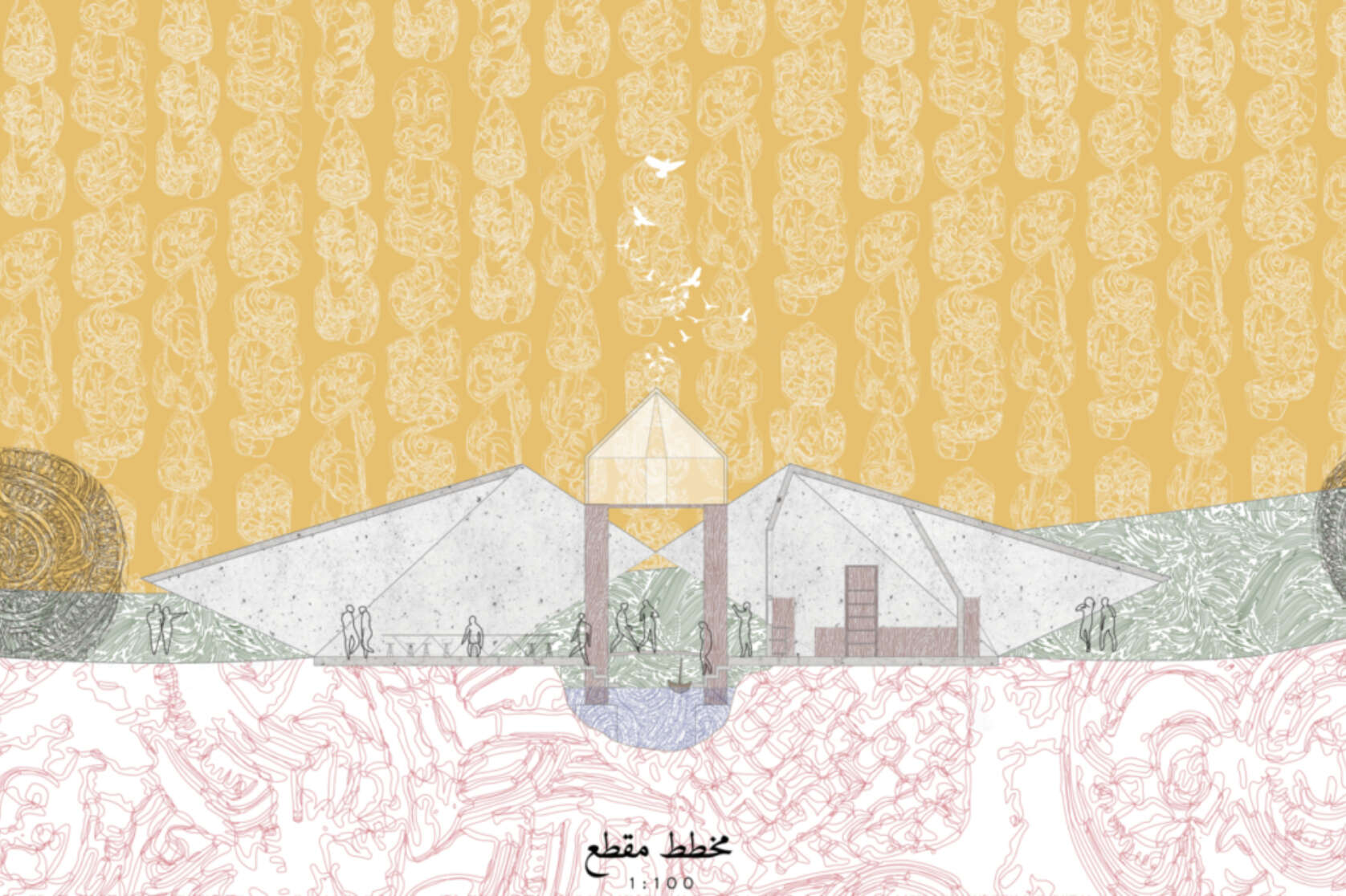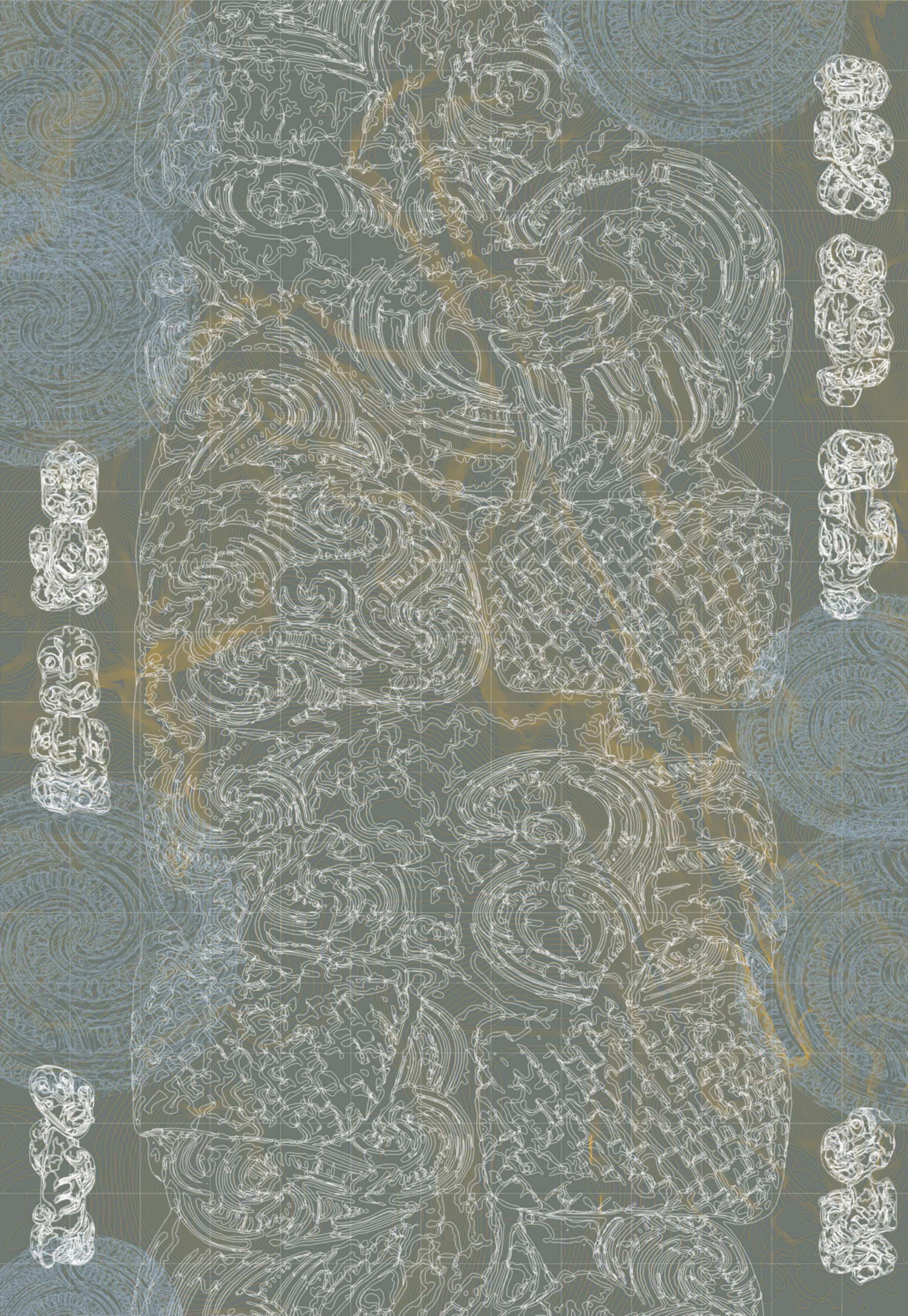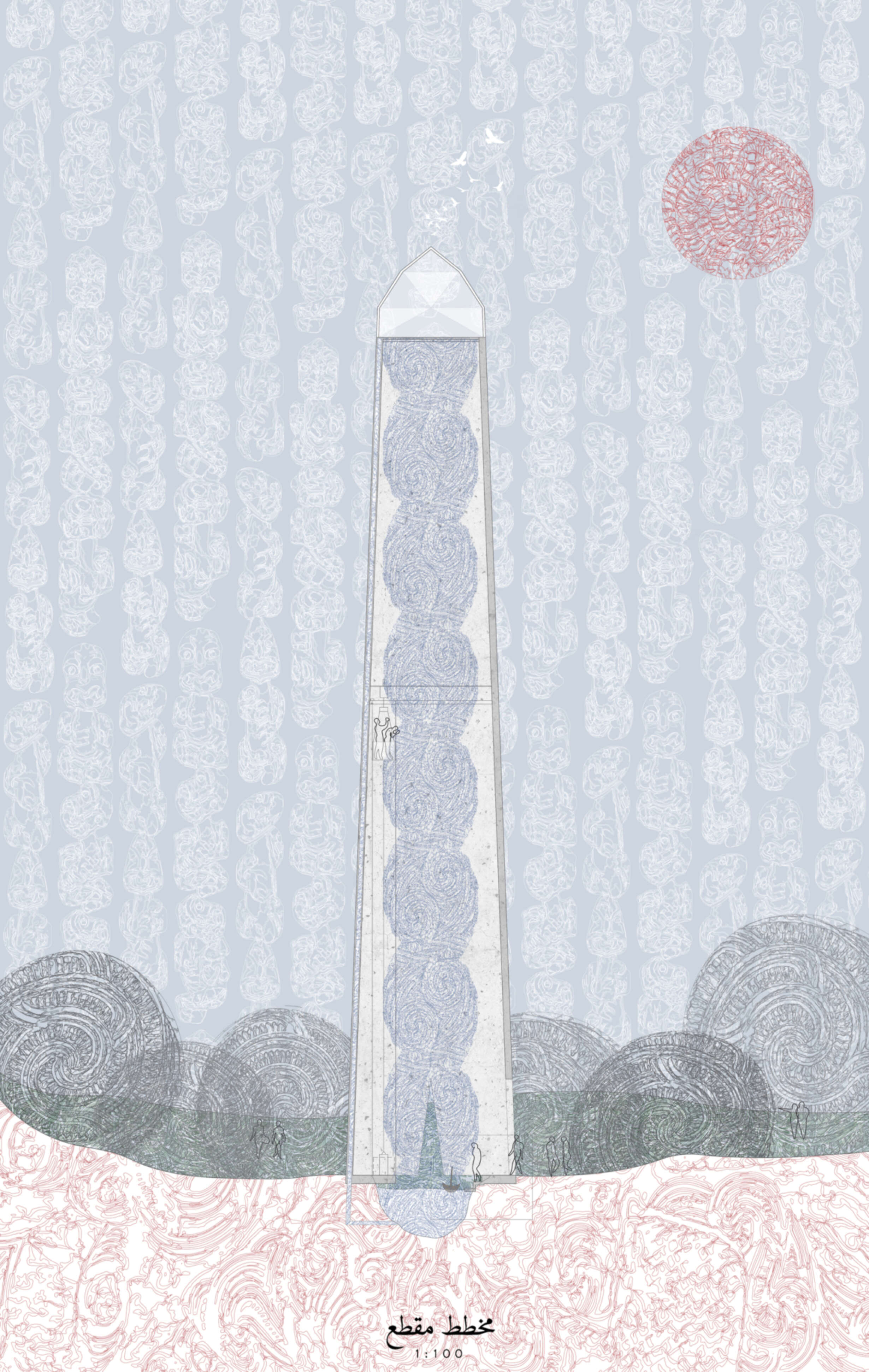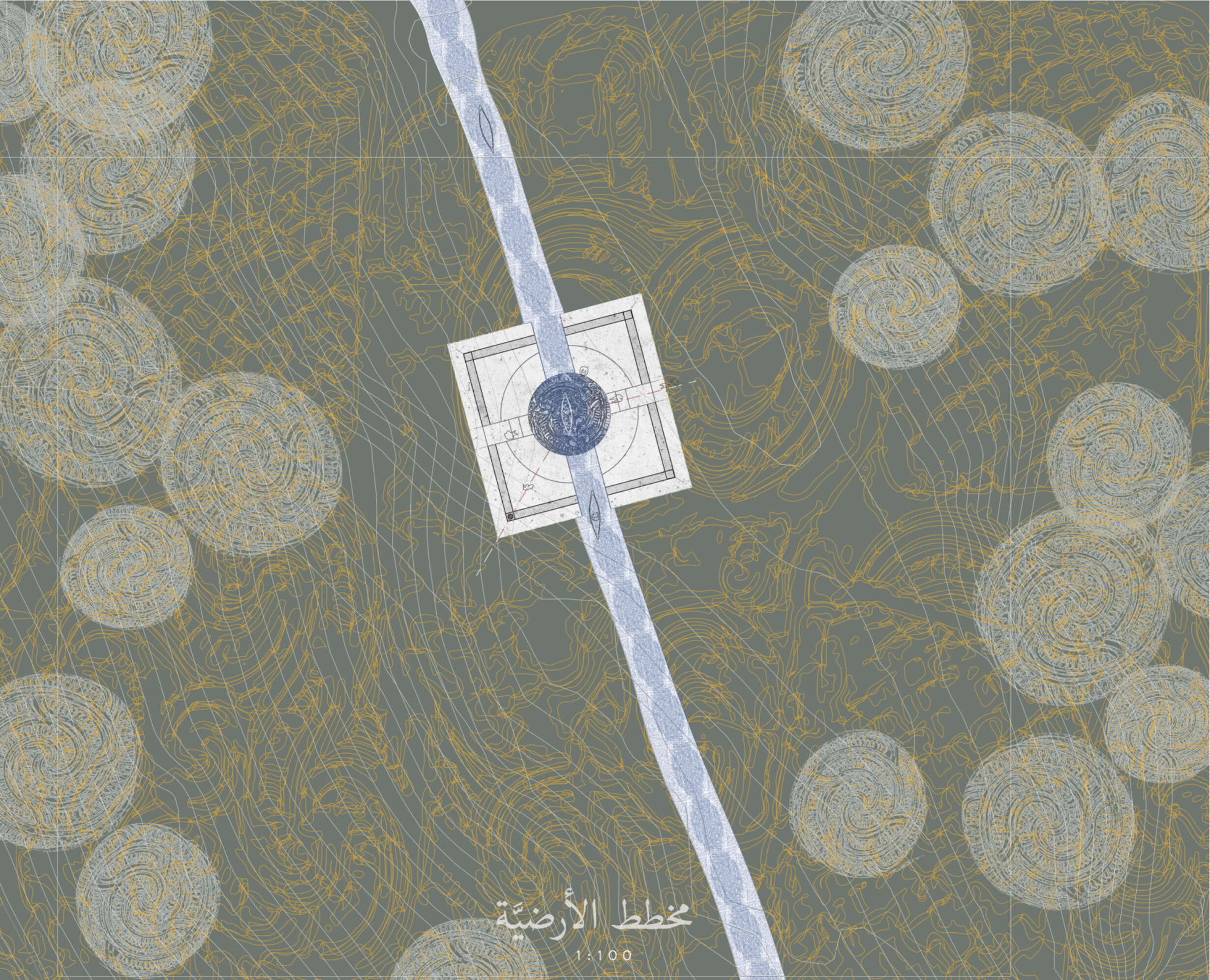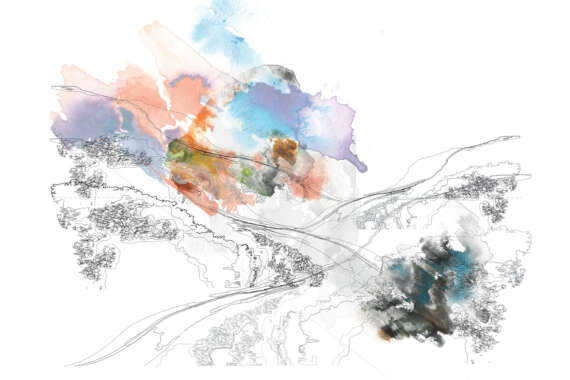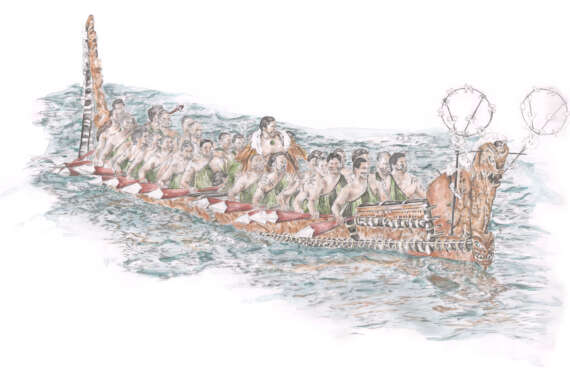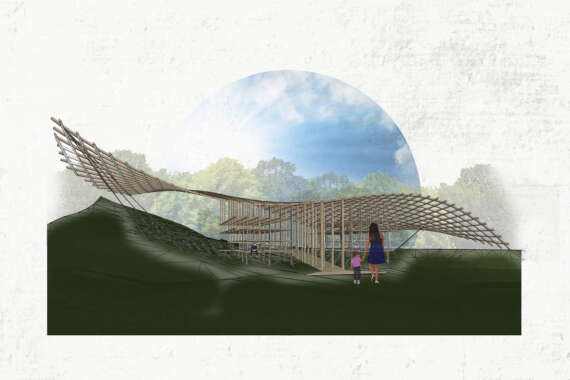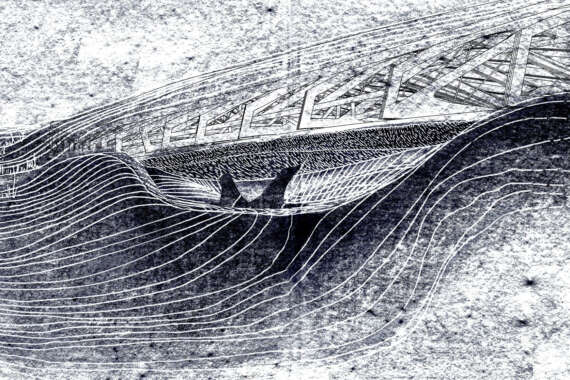The thesis aims to cleanse the image of Islam through a parallel cleansing of the Waipapa stream, located to the east of the domain, that is neglected and in a state of ruin. Understanding the way in which the stream is perceived in this context through personification of the stream is explored through the Māori world view. In Anne Salmond's article Tears of Rangi, she explains that the people of Whanganui have an important saying which is “Ko au te Awa, ko te Awa ko au” which translates to “I am the River, the River is me.” This stems from the ideology that the river is the source of ora (life/health/vitality), it is a being that connects the sea, the land and the people like a main artery. So there is not only a personification of the river as living entity but understanding the river as part of a larger whole that is all interconnected.
In order to visualise the Waipapa stream as a living entity, the Waipapa Marae, located within the University of Auckland's City Campus, was analysed through the mythological meanings of the carvings. These carvings then become the site and through ancient Islamic architectural drawing methodology it is applied to the architecture so that the design becomes a local manifestation. This methodology derives from the Topkapi scroll which is an ancient relic, and the oldest surviving Islamic architectural drawing.
The interventions created deconstruct the marae and the masjid and follow the narrative of Tāne-nui-a-Rangi as he travels the realms to retrieve the three baskets of knowledge as well as the Tapu stones. The aim is to create spaces that encourage enlightenment through self-reflection, learning and experience. Although each intervention has a primary function, the stream leads the observer into the architecture to better understand oneself within an enclosed space as well as understanding the environment simultaneously to better realise their place in the world.
